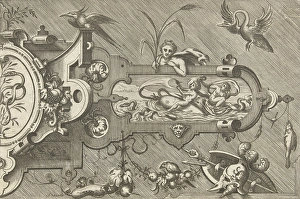Pieter Van Der Heyden Collection (page 3)
Pieter van der Heyden, a renowned artist of the 16th century, captivated audiences with his diverse range of works
All Professionally Made to Order for Quick Shipping
Pieter van der Heyden, a renowned artist of the 16th century, captivated audiences with his diverse range of works. In "Patience (Patientia)" from 1557, he skillfully portrayed the virtue of patience through intricate details and delicate brushstrokes. The following year, in "Pride (Superbia) from The Seven Deadly Sins, " van der Heyden explored the darker side of human nature. Collaborating with Pieter Bruegel the Elder in "Everyman" around 1558, they created a thought-provoking piece that delved into existential questions about life and mortality. Another notable work by van der Heyden is "St. James and the Magician Hermogenes" from 1565, where he depicted an intense battle between good and evil. In contrast to these serious themes, van der Heyden also showcased his ability to capture joyous moments in paintings like "The Peasant Wedding Dance" after 1570. His attention to detail brought this lively scene to life, immersing viewers in the festivities. Van der Heyden's series on seasons included masterpieces such as "Summer (Aestas)" and "Spring (Ver), " both painted in 1570. These vibrant artworks celebrated nature's beauty while showcasing his technical prowess. His creativity extended beyond traditional subjects; for instance, in "The Merchant Robbed by Monkeys" from 1562, he humorously depicted mischievous monkeys causing havoc for an unsuspecting merchant. Similarly amusing was his collaboration with Pieter Bruegel the Elder on "Big Fish Eat Little Fish" from 1557—a satirical commentary on societal hierarchies. "The Festival of Fools, " created after 1570, captured the exuberance and chaos of carnival celebrations—an explosion of colors that reflected humanity's desire for revelry amidst everyday struggles.
















